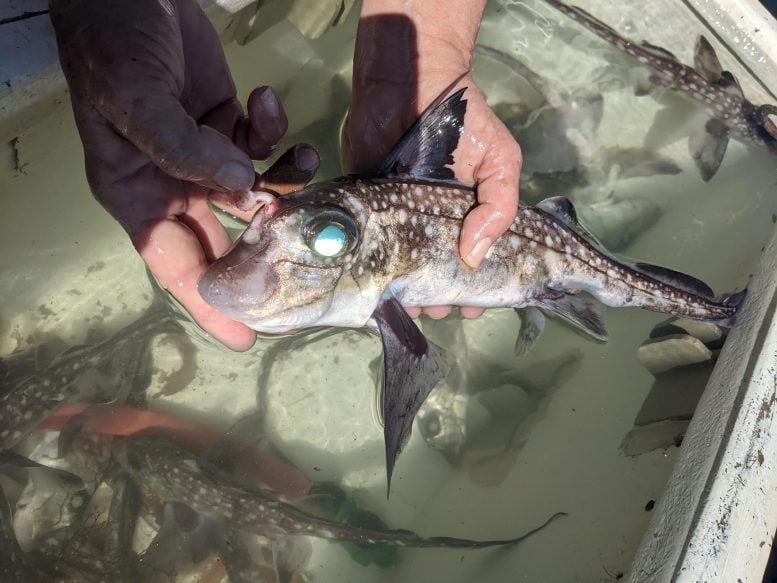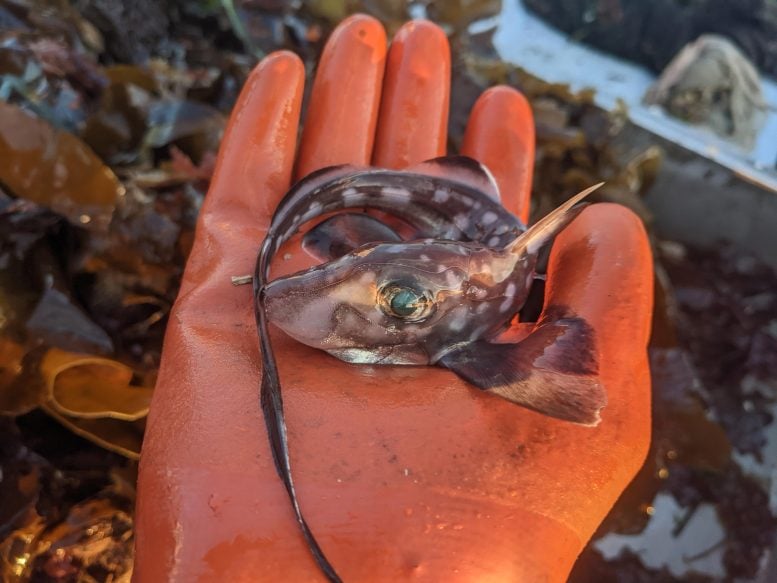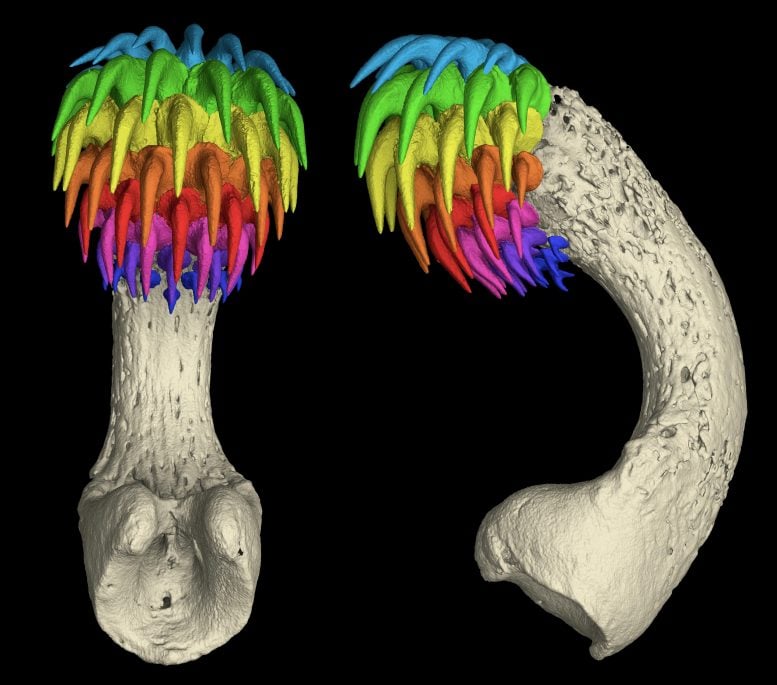
Male “ghost sharks,” eerie deep-sea fish known as chimaeras and closely related to sharks and rays, have a strange rod that projects from their foreheads and is covered with sharp, retractable teeth. New research shows these are not simple imitations but actual rows of teeth that develop outside the mouth.
The unusual structure, called a tenaculum, is found only in males and is thought to play a role in reproduction. It represents the species’ only set of distinct teeth and appears to help males hold onto females during mating, much like sharks use their mouths and teeth for the same purpose.
“If these strange chimaeras are sticking teeth on the front of their head, it makes you think about the dynamism of tooth development more generally,” said Gareth Fraser, Ph.D., a professor of biology at the University of Florida and senior author of the study. “If chimaeras can make a set of teeth outside the mouth, where else might we find teeth?”
Fossil and modern evidence of tooth rods
Researchers from the University of Washington and the University of Chicago examined both fossilized remains and living ghost sharks to unravel the mystery. One fossil, dating back 315 million years, revealed a tenaculum connected to the upper jaw that carried teeth strikingly similar to those found inside the mouth. Modern specimens taken from Puget Sound displayed the same head-based tooth development observed in the jaws of present-day sharks. Genetic analysis further confirmed that these structures activated the same genes responsible for producing oral teeth.

“What we found is that the teeth on this strange appendage look very much like rows of shark teeth. The ability to make teeth transferred onto that appendage, likely from the mouth,” Fraser said. “Over time, the tenaculum shortened but retained the ability to make oral teeth on this forehead appendage.”
Fraser collaborated with Washington’s Karly Cohen, Ph.D., and Michael Coates, Ph.D., from Chicago on the study, which was published this week in the Proceedings of the National Academy of Sciences.
Distinguishing teeth from skin denticles
Specialists in shark evolution and anatomy were fascinated by the tooth-covered rods emerging from the foreheads of ghost sharks. Their main question was whether the tenaculum contained genuine teeth connected to those in the mouth, or if it more closely resembled the tooth-like scales that cover the skin of sharks and some ghost sharks.

CT scans of the fossils and modern chimaeras gave the scientists unprecedented, detailed insights into the development of the tenaculum teeth, which looked remarkably similar to the teeth of today’s sharks. The nail in the coffin came from genetic evidence. The tenaculum teeth express genes found only in true teeth, never in shark skin denticles.
Evolutionary tinkering and surprising adaptation
“What I think is very neat about this project is that it provides a beautiful example of evolutionary tinkering or ‘bricolage,’” said Coates, a professor of biology at the University of Chicago. “We have a combination of experimental data with paleontological evidence to show how these fishes co-opted a preexisting program for manufacturing teeth to make a new device that is essential for reproduction.”
Cohen, a postdoctoral researcher at the University of Washington’s Friday Harbor Labs and first author of the paper, said scientists had never spotted teeth outside the mouth in this way before.
“The tenaculum is a developmental relic, not a bizarre one-off, and the first clear example of a toothed structure outside the jaw,” she said.
The bizarre path from a mouth full of teeth to forehead teeth used for mating demonstrates the impressive flexibility of evolution, the researchers say, always ready to repurpose structures for strange and unexpected new uses.
“There are still plenty of surprises down in the ocean depths that we have yet to uncover,” Fraser said.
Reference: “Teeth outside the jaw: Evolution and development of the toothed head clasper in chimaeras” by Karly E. Cohen, Michael I. Coates and Gareth J. Fraser, 4 September 2025, Proceedings of the National Academy of Sciences.
DOI: 10.1073/pnas.2508054122
Never miss a breakthrough: Join the SciTechDaily newsletter.
3 Comments
‘Areal emf tactic-Howl’ Right?
Why don’t you people leave them alone let them live their lives without any consequences thank you
That’s not how science works though, little girl. Would you rather scientists just stop making discoveries and we just stay stagnant? What a foolish comment you made.